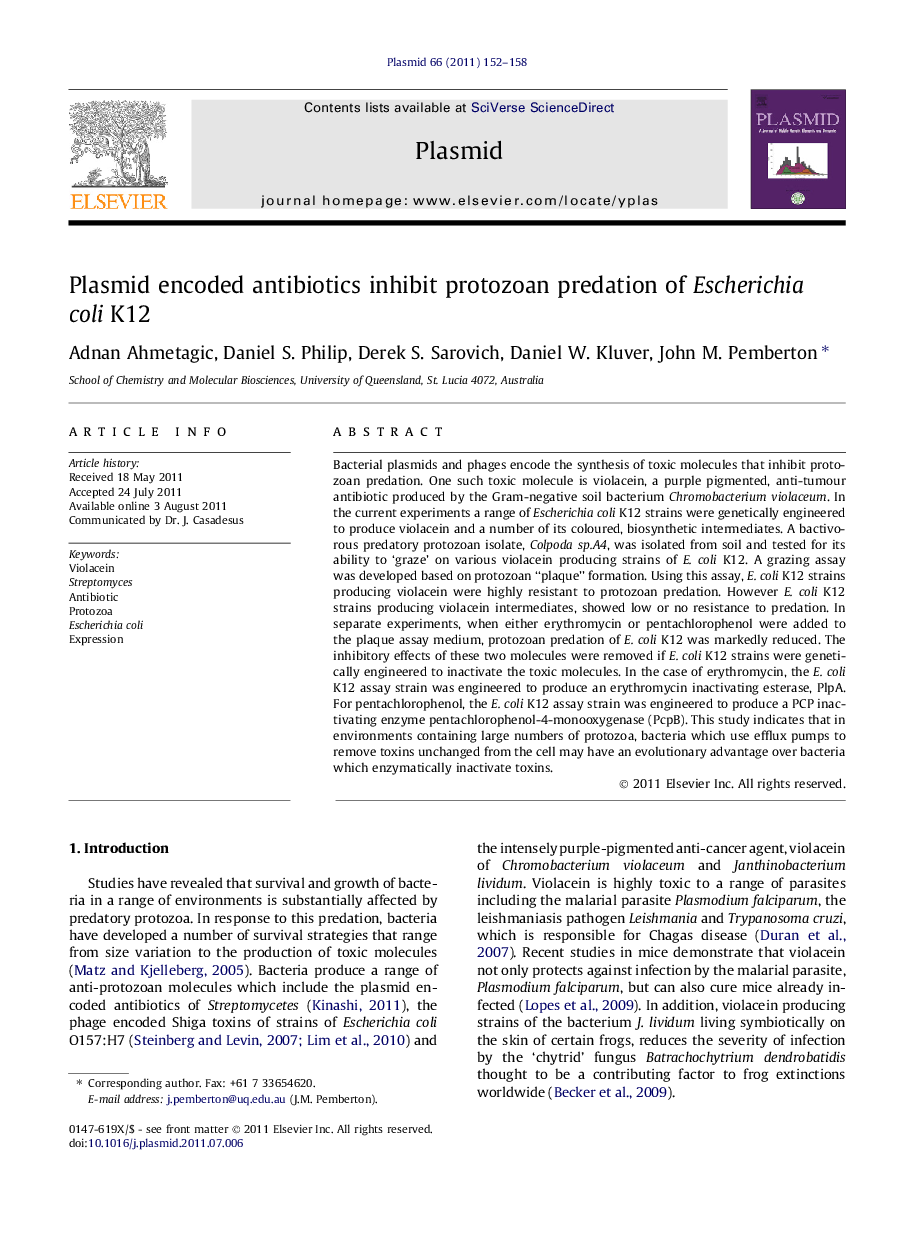| کد مقاله | کد نشریه | سال انتشار | مقاله انگلیسی | نسخه تمام متن |
|---|---|---|---|---|
| 2824285 | 1161639 | 2011 | 7 صفحه PDF | دانلود رایگان |

Bacterial plasmids and phages encode the synthesis of toxic molecules that inhibit protozoan predation. One such toxic molecule is violacein, a purple pigmented, anti-tumour antibiotic produced by the Gram-negative soil bacterium Chromobacterium violaceum. In the current experiments a range of Escherichia coli K12 strains were genetically engineered to produce violacein and a number of its coloured, biosynthetic intermediates. A bactivorous predatory protozoan isolate, Colpoda sp.A4, was isolated from soil and tested for its ability to ‘graze’ on various violacein producing strains of E. coli K12. A grazing assay was developed based on protozoan “plaque” formation. Using this assay, E. coli K12 strains producing violacein were highly resistant to protozoan predation. However E. coli K12 strains producing violacein intermediates, showed low or no resistance to predation. In separate experiments, when either erythromycin or pentachlorophenol were added to the plaque assay medium, protozoan predation of E. coli K12 was markedly reduced. The inhibitory effects of these two molecules were removed if E. coli K12 strains were genetically engineered to inactivate the toxic molecules. In the case of erythromycin, the E. coli K12 assay strain was engineered to produce an erythromycin inactivating esterase, PlpA. For pentachlorophenol, the E. coli K12 assay strain was engineered to produce a PCP inactivating enzyme pentachlorophenol-4-monooxygenase (PcpB). This study indicates that in environments containing large numbers of protozoa, bacteria which use efflux pumps to remove toxins unchanged from the cell may have an evolutionary advantage over bacteria which enzymatically inactivate toxins.
► In this study we demonstrate that an eukaryote can form plaques on Escherichia coli K12.
► Plaque formation provides a quantitative assay for protozoal predation of E. coli K12.
► E. coli K12 strains producing the antibiotic violacein are highly resistant to attack.
► Low levels of the organochlorine pollutant, pentachlorophenol, stopped attacks.
► Enzymatic inactivation of toxic molecules increased protozoal attack on E. coli K12.
Journal: Plasmid - Volume 66, Issue 3, September 2011, Pages 152–158